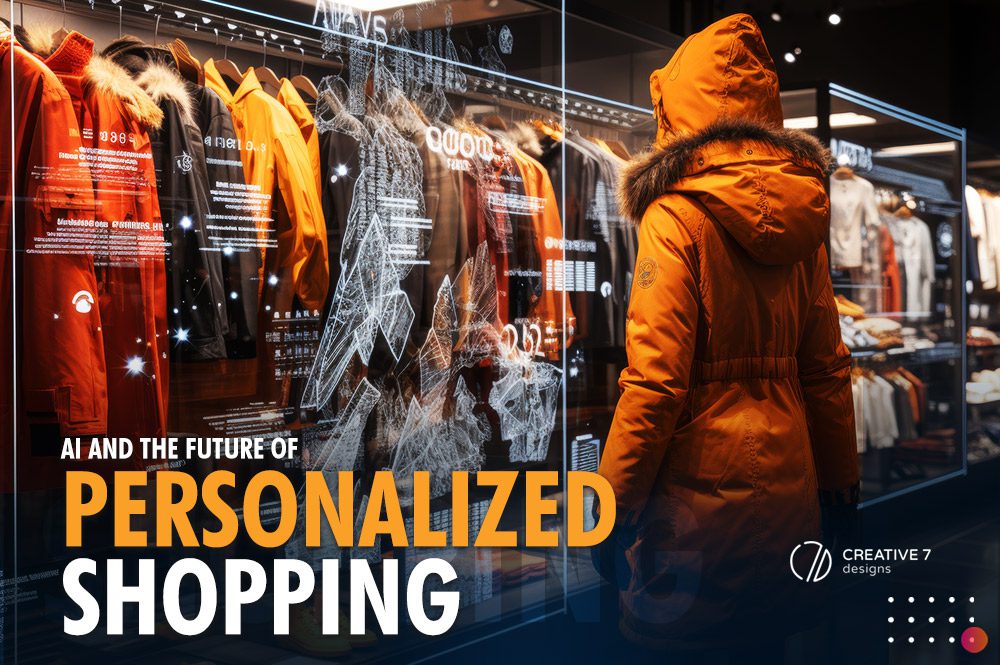Overview: Looking for a smarter way to shop? Discover how AI-driven personalization is transforming online and in-store shopping experiences to meet customer expectations for new and relevant merchandise every time they shop. Learn how artificial intelligence optimizes product discovery, enhances marketing campaigns, and boosts in-store sales through personalized interactions.
We’ve all been there, right? Hopping from one store to another, or clicking through endless pages online, and it feels like we’re swimming through a sea of stuff we don’t really want. It’s the quiet truth about shopping: most of the products we see aren’t the ones we’re actually after. Whether you’re browsing a mall or scrolling online, you often have to sift through a ton of unrelated items before you spot the gem you need.
But think about it — should shopping really be like this?
What if, instead, the first products you saw were exactly what you were looking for? Imagine if everything in a store was arranged just for you, prioritized by what you like and what you need.
That’s what the future of shopping looks like: quick, easy, and tailored just for you. A few years back, this might have seemed like a pipe dream, but believe it or not, we’re getting there.
Thanks to the magic of artificial intelligence (AI) and automation, shopping is transforming rapidly, both in stores and online. Brands are now using real-time data from your web browsing and previous shopping to create experiences that really feel personal.
Isn’t that something?
Understanding AI in Personalized Shopping
AI in retail is not just about suggesting products similar to those you’ve bought before; it’s about creating a holistic and nuanced understanding of your shopping behavior. Algorithms analyze vast amounts of data — previous purchases, browsing history, search queries, and even social media activity — to build a detailed profile of your preferences.
This data-driven approach enables retailers to offer products and services that resonate on a personal level.
The Magic Behind the Screens: How AI Personalizes Your Shopping Experience
Recommendation Engines: These are perhaps the most visible aspect of AI in shopping. Sites like Amazon and Netflix use these tools to suggest products or movies based on your past behavior. But today’s engines are becoming more sophisticated, capable of analyzing patterns in large datasets to predict what new products you might like, even if you haven’t shown a direct interest in them before.
Virtual Assistants and Chatbots: AI-powered virtual assistants can provide a personalized shopping experience by answering questions, providing recommendations, and even completing purchases for you. These systems learn from each interaction, improving their responses over time to meet your needs better.
Augmented Reality (AR) Shopping: AI-driven AR tools allow you to see how a piece of furniture would look in your home or how a dress might fit before making a purchase. This technology not only enhances customer satisfaction but also reduces the likelihood of returns.
Dynamic Pricing: AI also helps retailers adjust prices in real-time based on demand, competition, and customer profiles. This means the price you see might be influenced by your shopping patterns and how likely you are to pay a premium for certain products.
Here’s a reading you might be interested in >> The Role of AI Personalization in E-Commerce Growth
Truly Understanding Customers and Their Needs
Only the most persistent online shoppers would sift through dozens of pages in search of the perfect item. Most customers, feeling overlooked, would abandon the site after just a few clicks. However, with AI-powered product recommendations and search optimization, brands can now ensure that relevant content and customized search experiences meet customer needs right from the start.
Retail Offerings: Today’s savvy customers expect retail offerings to refresh continually and quickly. In fact, 69% of shoppers anticipate seeing new merchandise each time they visit a store or browse online. Using browsing data, artificial intelligence can automatically showcase fresh product selections every time shoppers visit an online store.
This strategy keeps the shopping experience dynamic, preventing customer fatigue and encouraging spontaneous purchases, especially on mobile devices.
The Art of Listening : At its core, understanding customers is about effective listening. This means more than just collecting data; it’s about interpreting what that data means in the context of customers’ lives. Businesses must tune into not only what customers are buying but also why they are buying it.
Are they driven by necessity, aspiration, convenience, or loyalty? What problems are they trying to solve? The answers to these questions can transform a business from a mere vendor to a valued partner.
>>> Related Reading: 16 Types of Customers Needs & How to Solve for Them
The Human Touch : Despite the advances in technology, the human element remains irreplaceable. Employees who interact directly with customers bring invaluable insights into their needs and expectations. Make sure to give your content/strategies a humanized touch to keep it users’ friendly and relevant!
Ethical Considerations and the Future
While AI-driven personalization offers numerous benefits, it also raises significant privacy and ethical concerns. The use of personal data must be handled with care to respect consumer privacy and prevent misuse. As AI technologies evolve, so too must the regulations that ensure they are used responsibly.
Looking ahead, the future of personalized shopping will likely see even more seamless integration of AI with everyday shopping experiences, both online and offline. Imagine walking into a store where the digital screens display products curated just for you, or a virtual shopping assistant that knows your size and style preferences without having to ask.
In Summary
AI is not just changing the way we shop; it’s redefining the relationship between consumers and retailers. As we move forward, the key to success in retail will lie not just in implementing new technologies, but in using them to create genuine, meaningful connections with consumers. Personalized shopping, powered by AI, isn’t just about selling more — it’s about creating a shopping experience that feels personal, engaging, and uniquely yours.
Enjoying our blogs? We’re all about helping you!
Reach out to Creative7Designs for more help and insightful content!


